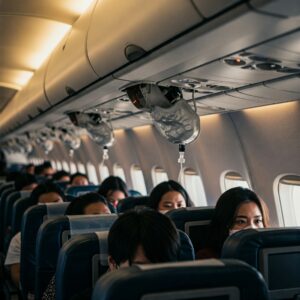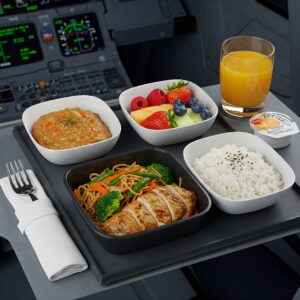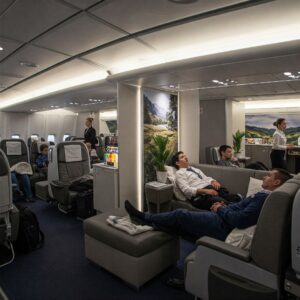9 Surprising Airplane Facts You Probably Didn’t Know
Learn some incredible facts about airplanes that you didn't know
Traveling by airplane has become a routine part of modern life, connecting people and cultures across vast distances. While you might be familiar with the pre-flight safety demonstrations and the in-flight beverage service, there’s a whole world of fascinating facts about air travel that often goes unnoticed. Get ready to have your perspective on flying take off with these nine surprising airplane facts!
1. The “Black Box” Isn’t Actually Black: Unveiling Flight Recorder Secrets

You’ve likely heard of the “black box” that investigators retrieve after an airplane incident. However, despite its name, the flight data recorder and cockpit voice recorder are actually painted a bright international orange. This vibrant color makes them much easier to locate amidst wreckage. So, the next time you hear about the black box, remember it’s a safety beacon in disguise!
2. Airplane Food Tastes Different (and There’s a Scientific Reason Why)
Ever wonder why airplane food can taste a bit bland? It’s not just the preparation; your sense of taste is significantly altered at high altitudes. The combination of dry cabin air and lower air pressure can reduce your sensitivity to sweet and salty flavors by as much as 30%. This is why airlines often use more intense seasonings to compensate.
3. Oxygen Masks Only Provide About 15 Minutes of Air: Understanding Emergency Procedures

Those yellow oxygen masks that drop down in case of cabin depressurization aren’t designed for a long-haul flight emergency. They typically provide about 12 to 15 minutes of oxygen. This might seem short, but it’s enough time for the pilots to descend to a lower altitude where the air is breathable. So, put yours on quickly when instructed!
4. Airplanes Can Withstand Lightning Strikes (Yes, Really!)
The thought of lightning hitting a plane can be terrifying, but modern airplanes are engineered to handle it. Their metal fuselage acts as a Faraday cage, conducting the electricity around the aircraft and safely back into the atmosphere, usually without any harm to passengers or the plane’s systems.
5. The Little Hole in Airplane Windows Has a Crucial Purpose: Pressure Regulation Explained
Notice that tiny hole at the bottom of most airplane windows? This “bleed hole” plays a vital role in cabin pressure. Airplane windows actually have three layers. The outer pane handles the cabin pressure, the inner pane is for protection, and the small hole in the middle pane helps regulate the pressure between the cabin and the air gap, preventing the outer pane from bearing the entire load.
6. Pilots and Co-pilots Eat Different Meals: A Safety Protocol You Didn’t Know

To minimize the risk of both pilots becoming ill from food poisoning simultaneously, airlines often have a rule that the captain and first officer must eat different meals. This simple precaution ensures that at least one pilot remains healthy and able to fly the aircraft safely.
7. Airplane Bathrooms Can Be Opened from the Outside: A Security Feature
While it might sound alarming, airplane lavatory doors can typically be unlocked from the outside by a crew member in case of an emergency. There’s usually a hidden latch or mechanism that allows access, ensuring passenger safety if someone becomes unwell or trapped inside.
8. The Air You Breathe on a Plane Comes Directly from the Engines: Surprisingly Filtered

The air inside an airplane cabin isn’t just recycled; it’s primarily drawn from the engines. This “bleed air” is then compressed, cooled, and filtered through sophisticated HEPA (High-Efficiency Particulate Air) filters, which are highly effective at removing dust, bacteria, and viruses. In fact, the air quality on a modern airplane is often comparable to that of a hospital operating room.
9. There’s a Secret “Rest Area” on Long-Haul Flights for Flight Attendants and Pilots: Crew Comfort
On very long flights, especially those crossing continents, you might not see the entire cabin crew at all times. That’s because many wide-body aircraft have hidden compartments or “crew rests” where flight attendants and pilots can take scheduled breaks to rest and avoid fatigue, ensuring they remain alert and focused for the duration of the journey.

These surprising facts offer a glimpse into the intricate world of air travel, highlighting the engineering, safety measures, and even the quirky details that make flying a unique experience. Next time you’re on a plane, you’ll have some fascinating trivia to ponder as you soar through the skies!




